What Is Metadata? A Practical Guide
Join the 1,000+ brands that trust us for their link building.
You’ve probably already heard this, but metadata is basically data that describes data. If data were a celebrity figure, you can essentially think of metadata as its main spokesperson. It’s in charge of the publicity, general understanding, and accessibility of the data represented.
In this post, we break down how metadata works and go over some of the ways it might be the key ingredient you’ve been missing in your SEO work.
Brief History of Metadata
As long as human beings have recorded and gathered data, metadata has been used to describe it. Although metadata has been around for a long time, its relevancy and contextual implications have more or less endured throughout its conception.
While today’s prevailing notion of metadata focuses on its technical uses as digital information, it has been created as an inescapable part of understanding and keeping data long before we had LCD screens. While many objects provide a context for data, one of the earliest forms was in a book.
Historically, metadata was created for written documents to ensure clarity, provide background information, and assist in easy retrieval of presented data. In this way, the inevitable need for systematizing books was possible through metadata.
Any important information that helped define or represent the contents of a book was summarized into the metadata of the book. You’ve probably never recognized them as such, but the table of contacts or even the title page of a book are great examples of metadata in written documents.
Without navigational context found in places like the table of contents or the index, it would be extremely tedious to reference or find things in a book. Similarly, the title cover or the summary on its back help identify and describe its contents. Metadata is the backbone of the Dewey decimal system.

Likewise, scientific fields like archeology looked to meta methods of storing and using gathered information by labeling the historical origins of uncovered artifacts. Otherwise known as provenance, this type of metadata was chiefly descriptive and created a backlog of origins for objects uncovered.
By keeping track of the origin or creation date of discovered artifacts through metadata, archaeologists and other scientists have deduced bigger picture analyses and uncovered relationships between their objects of study for years.
All of this is to preface that whether it was for writings or scientific discoveries, meta information was what brought order and relevancy to existing records. In a way, metadata invented how we efficiently access the context of data resources like web pages.
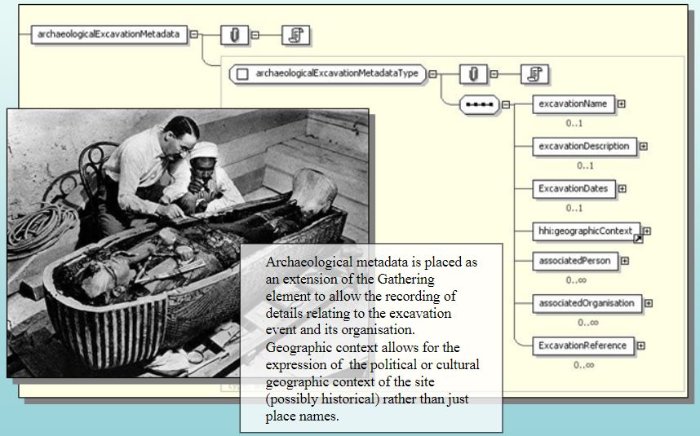
The Definition of Metadata
“Meta” means to refer to oneself, or is the quality of being self-referential. “Data”, on the other hand, can be shortly defined as information. The definition of metadata is the product of these two concepts merging: the definitive properties of anything that contains data.
Metadata is data that describes the main points of a given set of data. As such, metadata is the initial and primary point of reference for the management and comprehension of data resources. Its creation is specific to the context of whatever data is represented.
Whether it’s a webpage, document, or file, metadata today most commonly provides basic context for search engines to sort pages according to the most important information within them.
Essentially, metadata simplifies the process of understanding, sorting, and locating the data it represents. It’s the table of contents of any webpage, document, database, email, or file – all of the basic information of the data is shown through its metadata.
The standard use for metadata is for building operative recognition of data in simple terms that help both people and various forms of technology understand the data to efficiently access it.
As we introduced with its history, metadata is the main player when it comes to giving resources operative relevancy. Often, metadata means explaining what something is about through key terms so people and devices can properly use the data presented within a file or document.
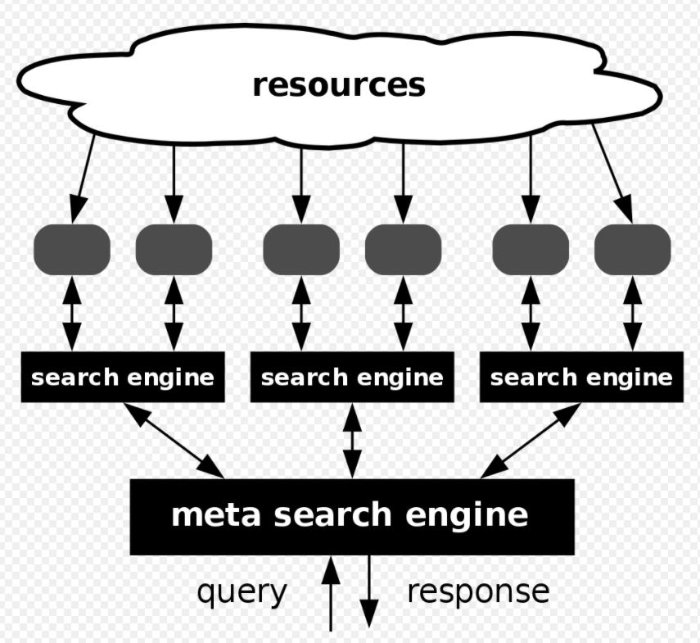
In addition to adding to the literal meaning of the data represented, metadata also defines a file’s relative meaning to other files based on the similarity of contents. Thus, metadata contextualizes existing data so that they are best used.
For example, meta information like the genre of a page serves as the main point of relevancy that groups that page with other pages with the same genre. In doing so, it makes it easy to categorically find and use the data for people who are looking for that specific type of content.
What’s more, simply identifying a part of data often reveals unique information about an otherwise useless and random set of information. After all, a set of numbers is nothing before it is labeled and defined in relation to each other.
For example, a database with the numbers of earnings your business may have accumulated over the years is just a list of random numbers unless a meta title lets you know which numbers mean earnings.
Metadata sums up the definitive attributes of data into variables that can be easily compared and investigated. The same concept of provenance in archeology applies here, where meta information can help us spot relationships between data sets.
In this case, the data of your business earnings over the allotted amount of years can be compared to how many new investments you made within those same years to see if any investments had an effect on earnings. Metadata lets this comparison take place by giving meanings to the numbers.
In other words, metadata can be created to give different types of data externalized meanings without using the data itself.
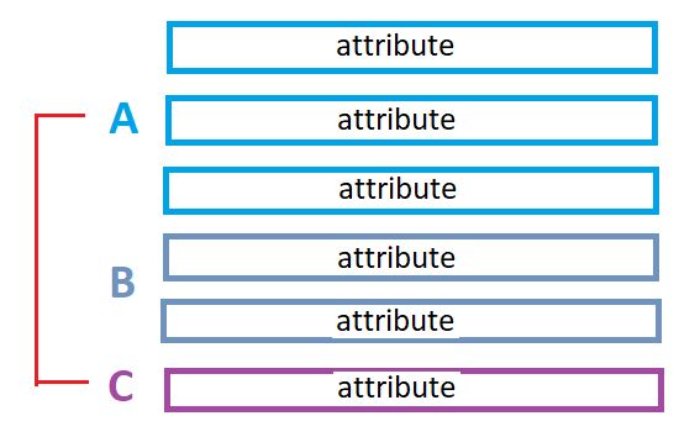
Types of Metadata
While it can be useful on its own, metadata is an invaluable source of information that people and search engines use for an overview of products, webpages, posts, and other accessible digital content.
To do so, the metadata created largely provides information that is either descriptive, structural, or administrative in function. Different types of metadata focus on different aspects of the represented data that come in all different shapes and forms.
The who, what, when, where, how, and why variables of data are represented in five primary types of metadata. These five include:
- Descriptive: identifiable characteristics like the title, subject, author, genre, and creation date of represented data.
- Rights: details about rights reserved, rights holders for administrative purposes like copyright and licensing information.
- Technical: technical qualities to use for digital management and interoperability functions like file size, creation date, etc – for example, the size and formatting for an image.
- Preservation: features that create a hierarchy or a sequential order for navigational and organizational purposes to help with the management of data.
- Markup languages: metadata that supplements interoperability and navigation (think road signs) like the heading, name, list, or paragraph; for example, the most popular one is HTML.
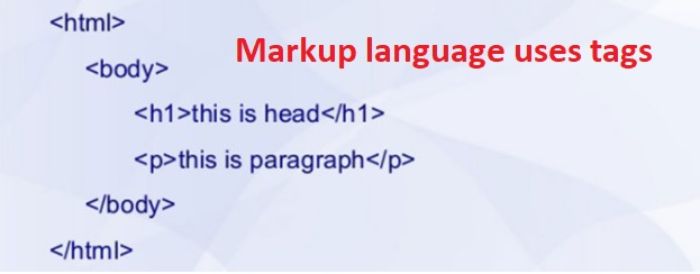
Examples of Metadata
As we mentioned before, metadata provides context for existing data through brief, qualitative meta attributes that help operative systems like computers and search engines as well as laymen like yourself to distinguish, organize, and retrieve data.
Invisible to the untrained eye, metadata for websites is hidden in HTML source codes. Most web page metadata is transcribed in DCAT, or Data Catalog Vocab. Of course, there are other examples of metadata that are greatly prevalent in our increasingly digitized world.
To start, every photo you take for the gram collects and saves metadata on your phone. This usually consists of your geolocation, the time that the photo was taken, your filter settings, the photo’s size, and its filename.
Another example can be seen in emails, where many of the metadata fields like the subject, receiver and sender, and time sent are largely visible. Blogposts also have highly visible metadata like the title, author, published time, tags, and subject categories before the beginning of the post.
Metadata, and Where You May Find It
Whether it’s a blog post or a picture of your cat saved on your phone, by now you’ve probably realized that metadata can be created for virtually any type of data. From websites to data spreadsheets, all documents containing data include metadata.
For online resources, metadata is encoded in the HTML of a webpage for search engine crawlers to understand. Through that metadata, basic information about the data used on the website is displayed so both people and search engine crawlers can process the data easier.
Most notably, metadata can be used to track consumer habits and web activity accumulated on the Internet. Companies, internet providers, and governments alike often use metadata to sort and filter through the history of your web and consumer activity to find information.
Another common place where you can find metadata is in the form of a computer file. Administrative metadata stored in computer files describes important file elements like the file type, file size, date created, and any relevant rights reserved.
Metadata for files also includes data that ensures interoperability between devices and computer systems. That way, metadata lets people have access to data easier across different computer platforms as well as categorically store files.
Thanks to metadata, you can download, file, and find all different kinds of computer files in folders on your desktop or laptop.
Still, the most immediately visible form of metadata is probably on your social media- your name and bio are prime examples of descriptive metadata. Even friend recommendations on Facebook come from metadata that was gathered from your profile.
The last standard place where you may find metadata used, quite unsurprisingly, is in data spreadsheets. A bunch of well-organized spreadsheets, no matter how in-depth or accurate, have absolutely no use unless they are labeled and cataloged in a distinguishable manner.
In data spreadsheets, metadata is any descriptor or title that helps operating systems and people interpret databases. For example, a data spreadsheet on the number of COVID-19 cases in the United States over the past few months will need metadata like the month or locations of the cases.
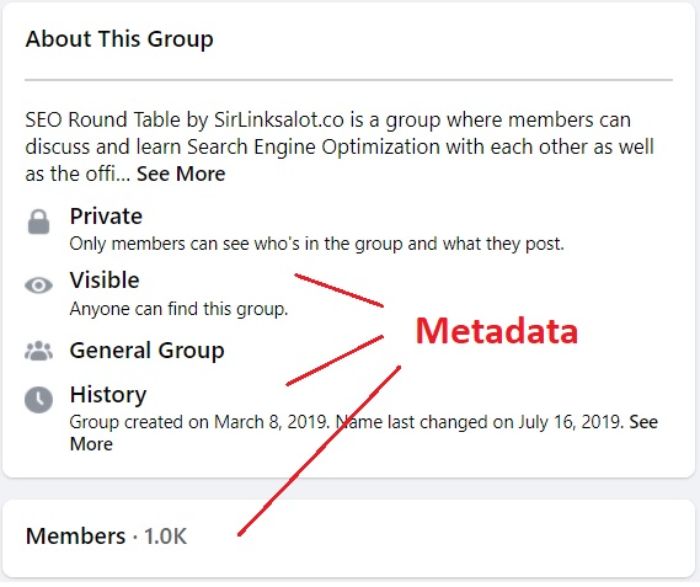
Metadata and Web Search
Now onto the reason why you’re probably reading this article – metadata plays a huge role in generating SERPs (Search Engine Results Pages). From the keyword tags and descriptions to the various forms of meta tags, metadata is an integral part of managing access to web pages.
Metadata for web pages is written in the head section of the source code so the search engine crawlers or bots that scourge for web page information can see it first. For web page metadata, meta information can either be automatically prescribed or manually added in.
Depending on what kind of data it represents, automatic metadata is often surface-level and not as helpful as manual input. On the other hand, manual metadata provides the opportunity for accurate and in-depth attributes to be added.
Meta title and meta description are the main players when it comes to metadata on the web – the meta title is the brief descriptors or names that represent your topic while the description gives a more detailed glimpse into the contents of the page.

SERPs display these meta tags to ensure your site ranks for the right keywords. Metadata is essentially your site’s way of communicating to the crawlers its primary purpose so they don’t have to judge for themselves.
When you choose to manually input your metadata, you are essentially saving crawlers the time and energy of defining your data by pushing them your terms.
The goal is to match the searcher’s intent better than any other results that come up on the page. Even if a page isn’t necessarily in the top results, people will often look for and click on the sites that seem best for their specific needs.
What do they look at to judge this? The title and description that your metadata expresses on the SERP. If your title tag and meta description are bomb, you can expect your click-through rate (CTR) to go up.
How Metadata Affects SEO
Types of Meta Tags
Meta tags are the most relevant form of metadata to onpage SEO because they are the most common type of meta-information on websites. They summarize web page information in the source code at the top of a web page.
While not all types of meta tags benefit SEO, some are extremely useful to know about. While they are certainly not limited to these four types, these are the most applicable to SEO interactions.
- Meta keyword attribute: words that best describe a page’s purpose.
- Title tags: text at the top of the browser that names content accordingly.
- Meta description attribute: brief bio of your page for users to read.
- Meta robots attribute: metadata for crawlers and bots to use.
Optimizing metadata wth keywords is an important step in writing blog posts for SEO.
Metadata should serve your company by being relevant, unique, and informative. Again, while it may seem convenient, automatized metadata is not ideal because it might not accurately reflect your SEO plans and relies on search engine software to describe your web pages.
Meta Keywords
While they used to be the most important part of technical SEO work, meta keywords are tagged words that are used to describe page data that search engines no longer take into account when generating SERPs.
Thanks to a bunch of wise guy SEO trends that attempted to manipulate SERP rankings by tagging unrelated popular words to pages, meta keywords are obsolete.
Title Tags
Hands down the most relevant type of meta tag, title tags are a kind of meta title that is located at the top of the browser. They wield significant potential to impact SERP rankings by being the first and primary opportunity to attract users with title words that represent the main elements of the data.
The more unique and relevant the keywords are, the higher chances you will have of boosting traffic and subsequently your SERP rankings and visibility. The right title tags are a surefire way to enhance visibility and increase potential.
Title tags should be 70 characters max or you risk having your title cut off, which may not look as appealing to browsers. Still, make sure everything makes sense contextually, or Google will override your tags and replace them with its own understanding of what is relevant to your content.
Remember you’re trying to bring in clicks from people IRL, not just communicate to bots or crawlers for SERP rankings. Mention both your brand and the product in the title if you can, and don’t forget to use dividers so whatever keywords you decide on are legible and inviting to users.
Again, even if clicks don’t necessarily translate to direct sales, the more clicks that your page gets from your title tags, the better it is for your SEO which inevitably helps your business grow.

Meta Description
Like title tags, the meta description of a page is an open opportunity to bring in customers and clicks that can greatly benefit your SEO. Meta descriptions provide categorical information to search engines and give a quick rundown of your page content to searchers.
More often than not, someone will look for something and click on a site based on the meta description that is available to them as most titles can be similar. However, unlike title tags, the meta description does not become more useful with an added keyword or two.
What’s more, search engines like Google can replace your thought-out metadata for direct words from your page data it may think is more suitable. Still, it is a great opportunity to enhance your SEO if you haven’t put too much thought into your meta description already.
Don’t fall into the common but very tempting trap of putting in the same meta description and tags for every page, or stuffing keywords into the title that don’t make sense or don’t cater to the searchers. Again, remember to make your content specific to the real people scrolling through the results.
Make sure your description is clear and concise and consistent with the type of description you put for other pages on your site so people don’t get confused. The bottom line is that each page should be custom-tailored to customers.
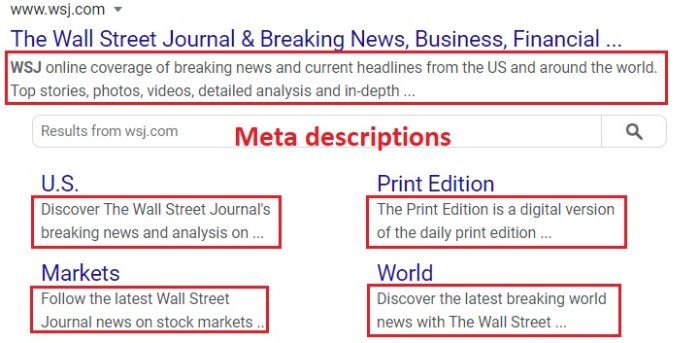
Meta Robots
Robots in your metadata tell engine crawlers whether or not they should follow or index your page for SERPs.
While most crawlers follow and index sites by default, meta robots can be helpful when you want to strategically exclude some of your data for either indexing or link follows. No follow or no index requests can be highly detrimental if not used wisely so err on the side of caution here.
Metadata Wrap-up
Your website communicates to and through search engines with its metadata. Its prevailing functions on the web particularly allow us to understand how SERP rankings are sorted.
A basic understanding of how it all works is crucial to making sure your metadata doesn’t hurt any of your SEO efforts. There are SEO plugins for WordPress that help website builders create or automate metadata.
Hopefully this article gives you some ideas on how to best create optimized metadata for your business.
Contributing Author: Vanessa Lee Son
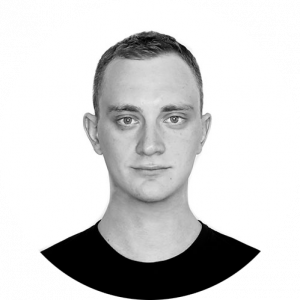 Article by:
Article by:
Chris Tzitzis
Hey I'm Chris, one of the founders here at SirLinksalot. I'm into building internet money machines (affiliate websites) and specialize in building backlinks. Find out more about me and my link building team.
 Questions or Comments?
Questions or Comments?
We are active in our Facebook Group seven days a week and would love to hear from you. Ask us questions, learn from other group members, and share your knowledge.
Related Posts
Ready To Start Building Your Rankings?
Your link building journey to the top of Google starts today!
Apply for Managed Link Building to get a free analysis and game plan, or order backlinks a la carte.
Link building services that work.


